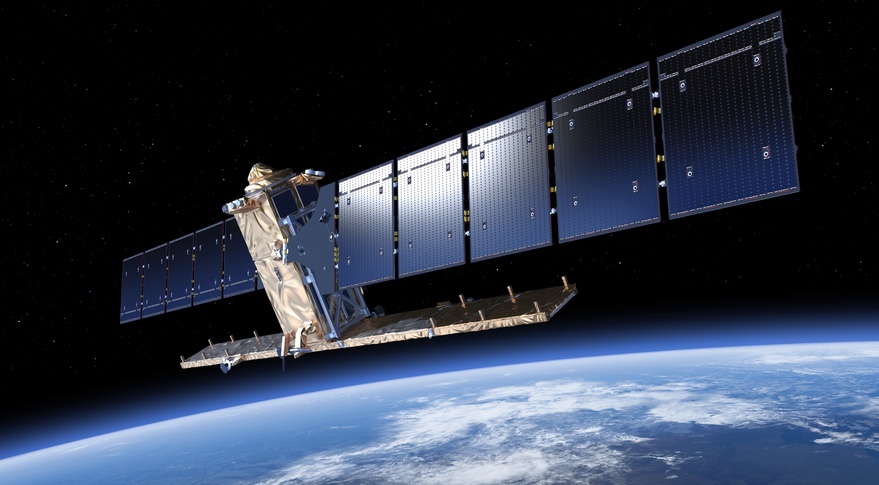WASHINGTON — The European Space Agency is ending efforts to restore operations of the Sentinel-1B radar imaging satellite that malfunctioned more than half a year ago and will instead move up the launch of a replacement.
ESA said in an Aug. 3 statement that the agency and the European Commission, partners on the Copernicus series of Earth observation satellites, had given up trying to restore the synthetic aperture radar (SAR) payload on Sentinel-1B and was ending the spacecraft’s mission more than six years after its launch. That payload malfunctioned in December 2021 and ESA has been working since then to try to recover it.
A summary of the investigation into the SAR payload failure concluded that two 28-volt power regulators for the SAR payload malfunctioned. One is needed to operate the payload. Efforts to restore them failed other than one case in April when the main regulator turned on for 4.4 seconds before turning off again. That provided “valuable observations to identify possible failure modes,” the summary stated.
The report concluded the most likely reason the power regulators failed was “a potential leakage of a ceramic capacitor” found in both regulators that had to be replaced during manufacturing and testing of the payload. The replacement was soldered in a way that may have damaged it.
“The conclusion drawn by the Anomaly Review Board is that it is impossible to recover the 28V regulated bus of the satellite’s C-band synthetic aperture radar antenna power supply unit, which is needed to provide power to the radar electronics,” Simonetta Cheli, director of Earth observation program at ESA, said in the statement announcing the end of the Sentinel-1B mission.
There had been rumors in recent days that ESA and the European Commission had given up on efforts to recover Sentinel-1B. the last public update on recovery efforts was in April. An ESA spokesperson said Aug. 2 that the agency was still “gathering some additional information” and coordinating with the commission about the mission.
Sentinel-1B operated in tandem with Sentinel-1A, launched in 2014, to provide SAR imagery for a variety of Earth science applications. Sentinel-1A remains operational but has the same potential flaw in its payload power system. The ESA investigation noted that the payload power system on Sentinel-1A has not experienced any problems since launch and, since the Sentinel-1B anomaly, its performance is being closely monitored.
“The permanent unavailability of Sentinel-1B satellite represents an important loss for the European Union’s space program and the European Commission is engaged to mitigate its impact,” Paraskevi Papantoniou, acting director for space in the European Commission’s Directorate General for Defence, Industry and Space, said in the statement.
In the near term, ESA and the European Commission are buying SAR data from other satellites. That includes Canada’s Radarsat-2 and Radarsat Constellation Mission, Germany’s TerraSAR-X, Italy’s COSMO-SkyMed and Spain’s PAZ.
A new satellite, Sentinel-1C, is nearly ready for launch. ESA announced in April a contract with Arianespace for the Vega-C launch of Sentinel-1C. At the time the launch was scheduled for some time in the first half of 2023.
“Our focus is on fast-tracking the launch of Sentinel-1C,” Cheli said in the statement. “Now, thanks to the successful inaugural flight of the Vega-C rocket on 13 July, we, with Arianespace, are targeting the launch in the second quarter of 2023.” There was discussion early in the year, though, of moving up the Sentinel-1C launch to as soon as late this year.
Despite the failure of its SAR payload, the Sentinel-1B spacecraft itself remains operational. “We have Sentinel-1B under control,” Alistair O’Connell, Sentinel-1 spacecraft operations manager, said in a statement. “We perform regular monitoring of the spacecraft health and routine orbit control maneuvers.”
ESA will deorbit Sentinel-1B after the launch of Sentinel-1C. O’Connell said the spacecraft will comply with orbital debris mitigation guidelines that call for spacecraft to be deorbited within 25 years of the end of its mission. “In practice, the reentry duration is expected to be much shorter,” he said.
